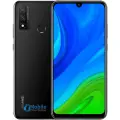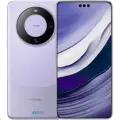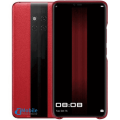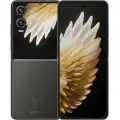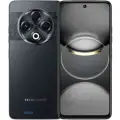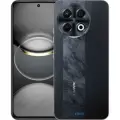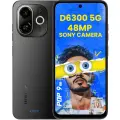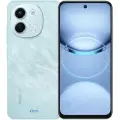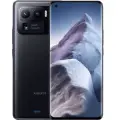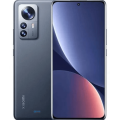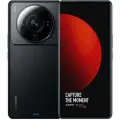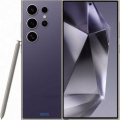Huawei Mate 30 Pro
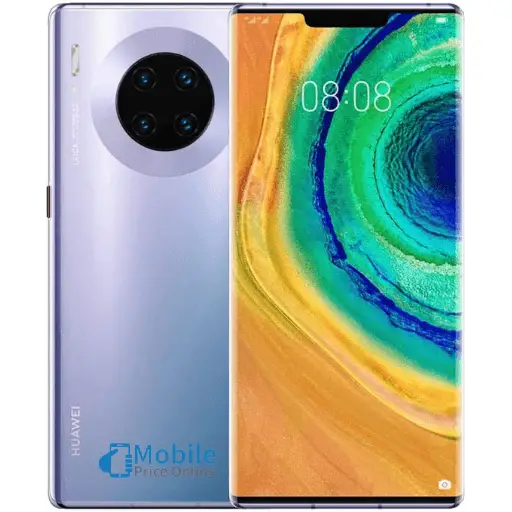

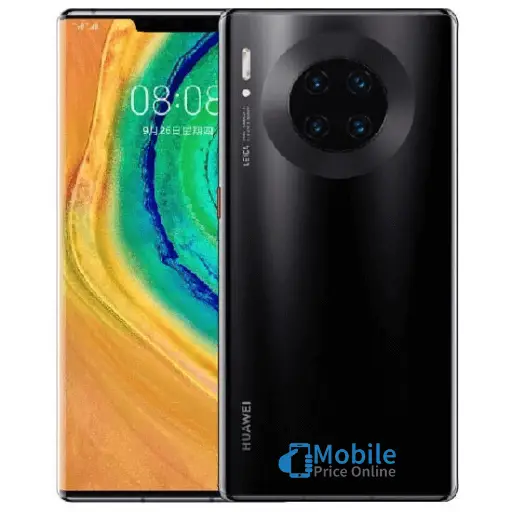
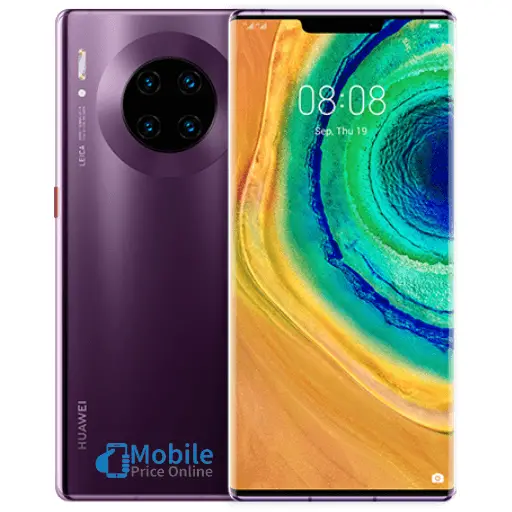


-
Released: 2019, September 26
-
OS: Android 10; EMUI 10
-
Display: 6.53" 1176x2400 pixels
-
Camera: 40MP 2160p
-
RAM: 8GB RAM HiSilicon Kirin 990
-
Battery: 4500mAh Li-Po
Full Specifications and Price in Bangladesh
General Info
| Announced | 2019, September 19 |
| Status | Available |
| Brand | Huawei |
| Model | Huawei Mate 30 Pro |
| Color | Black, Space Silver, Cosmic Purple, Emerald Green |
| Made by | China |
| Price |
Official (8GB+128GB) ৳99,999 / Unofficial (8GB+128GB) ৳74,500 / (8GB+256GB) ৳79,000 |
Network
| Technology | GSM / HSPA / LTE |
| 2G Bands |
GSM 850 / 900 / 1800 / 1900 - SIM 1 & SIM 2 (dual-SIM model only) |
| 3G Bands |
HSDPA 800 / 850 / 900 / 1700(AWS) / 1900 / 2100 |
| 4G Bands |
1, 2, 3, 4, 5, 6, 7, 8, 9, 12, 17, 18, 19, 20, 26, 28, 32, 34, 38, 39, 40, 41 - Global 1, 2, 3, 4, 5, 6, 7, 8, 9, 12, 17, 18, 19, 20, 26, 34, 38, 39, 40, 41 - China |
| 5G Bands | N/A |
| Speed | HSPA, LTE-A |
| GPRS GPRS (General Packet Radio Service) is a packet oriented mobile data service on the 2G and 3G cellular communication system's global system for mobile communications (GSM), Generally, GPRS is used for the purpose of wireless data transfer, such as sharing pictures and videos or browsing the Internet via a mobile phone connection. | |
| EDGE EDGE (Enhanced Data GSM Environment) is a wireless network technology generally considered the next step in the 2G network offers data transfer rates up to four times faster than ordinary GSM networks, Generally, EDGE is used for the purpose of wireless data transfer, such as sharing pictures and videos or browsing the Internet via a mobile phone connection. |
Body
| Dimensions | 158.1 x 73.1 x 8.8 mm (6.22 x 2.88 x 0.35 in) |
| Weight | 198 g (6.98 oz) |
| Build | Glass front (Gorilla Glass 6), glass back (Gorilla Glass 6), aluminum frame |
| SIM SIM (Subscriber Identity Module) is a small card that contains mobile network subscriber's account information. This allows the phone using the card to attach to a mobile network. The SIM card is most commonly associated with GSM and UMTS mobile networks. Moving a SIM card from one phone to another allows a subscriber to switch mobile phones without having to contact their mobile network carrier. SIM cards can also be used by a phone to store limited amounts of data, such as phone numbers and text messages. | Single SIM (Nano-SIM) or Hybrid Dual SIM (Nano-SIM, dual stand-by) IP68 dust/water resistant (up to 2m for 30 min) |
Display
| Type Design Type called form factor refers to a mobile phone's size, shape, and style as well as the layout and position of major components of phone. There are three major form factors seen in mobile phones => bar phones, folding phones and sliding phones. | OLED, HDR10 |
| Size | 6.53 inches, 108.7 cm2 (~94.1% screen-to-body ratio) |
| Resolution | 1176 x 2400 pixels, 18.5:9 ratio (~409 ppi density) |
| Refresh Rate | 90Hz |
| Protection |
Corning Gorilla Glass 6 |
| Pixel Density Pixel Density (PPI) is refers to the concentration of pixels on a particular display, measured in pixels per inch (ppi). Pixel density is calculated by dividing the diagonal pixel resolution of a display by its diagonal size, higher pixel density better display quality. | 409 ppi density |
| Multitouch | |
| Features |
MP4/H.264 player MP3/WAV/eAAC+/FLAC player Document viewer Photo/video editor |
Platform
| Operating System OS => Every computer system run on a base software called Operating System (OS). Operating System controls all basic operations of the computer (such as smartphone, PDAs, tablet computers and other handheld devices). The Operating System allows the user to install and run third party applications (apps), apps are used to add new functionality to the device. | Android 10, EMUI 11, no Google Play Services |
| Chipset Chipset is a group of integrated circuits designed to perform one or a more dedicated functions, often with real time computing constraints, Popular smartphones are equipped with more advanced embedded chipsets that can do many different tasks depending on their programming. | Kirin 990 (7 nm) |
| CPU CPU (Central Processing Unit) mostly known as processors, CPU processes instructions in order to carry out certain functions that make your device operate properly. Processors are often described as the brain of computers, smartphones and tablets, Smartphones and tablets rely on processors to carry out their every task, Processors are an incredibly important factor in selecting any type of computing device, including your smartphone. | Octa-core (2x2.86 GHz Cortex-A76 & 2x2.09 GHz Cortex-A76 & 4x1.86 GHz Cortex-A55) |
| GPU GPU (Graphics Processing Unit) is a single-chip processor designed to rapidly manipulate and alter memory to accelerate the creation of images in a frame buffer intended for output to a display, This includes things such as lighting effects, object transformations, and 3D motion. | Mali-G76 MP16 |
Memory
| Card Slot Memory Card Slot is a special slot for inserting a memory card. Memory cards allow you to expand the phone's built-in memory, A memory card (sometimes called a flash memory card or a storage card) is a small storage medium used to store data such as text, pictures, audio, and video, for use on small, portable or remote computing devices such as mobile phones, mp3 players, digital cameras. | NM (Nano Memory), up to 256GB (uses shared SIM slot) |
| RAM RAM (Random Access Memory) is a type of computer memory that can be accessed randomly, any byte of memory can be accessed without touching the preceding bytes that allows information to be stored and accessed quickly from random locations. RAM is the most common type of memory found in computer systems, smartphones, tablets and other electronic devices. | 8 GB |
| Internal Internal Storage is a data storage space (flash memory) mostly used in smartphones, tablets and other electronic devices where operating system, apps, music, photos, videos, files and other user data Is stored. | 128/256 GB UFS3.0 |
Main Camera
| Camera Resolution |
40 MP, f/1.6, 27mm (wide), 1/1.7", PDAF, OIS 8 MP, f/2.4, 80mm (telephoto), 1/4.0", PDAF, OIS, 3x optical zoom 40 MP, f/1.8, 18mm (ultrawide), 1/1.54", PDAF TOF 3D, (depth) |
| Camera Features |
Leica optics, dual-LED dual-tone flash, panorama, HDR |
| Video Resolution | 4K@30/60fps, 1080p@30/60/120fps, 1080p@960fps, 720p@7680fps, gyro-EIS |
Selfie Camera
| Camera Resolution |
32 MP, f/2.0, 26mm (wide), 1/2.8", 0.8µm TOF 3D, (depth/biometrics sensor) |
| Camera Features |
HDR, panorama |
| Video Resolution | 1080p@30fps |
Sound
| Alert Types | Vibration, MP3, WAV ringtones |
| Loudspeaker | Yes |
| Audio Jack |
Connectivity
| WLAN | Wi-Fi 802.11 a/b/g/n/ac, dual-band, DLNA, Wi-Fi Direct, hotspot |
| Bluetooth Bluetooth is a wireless communications technology for exchanging data between mobile phones, headsets, computers and other network devices over short distances without wires, Bluetooth technology was primarily designed to support simple wireless networking of personal consumer devices. | 5.1, A2DP, aptX HD, LE |
| GPS GPS The Global Positioning System is a satellite-based radio navigation system, GPS permits users to determine their position, velocity and the time 24 hours a day, in all weather, anywhere in the world, In order to locate your position, your device or GPS receiver must have a clear view of the sky. | Yes, with dual-band A-GPS, GLONASS, BDS, GALILEO, QZSS |
| NFC NFC (Near field communication) is a set of standards for smartphones and similar devices to establish peer-to-peer radio communications with each other by touching them together or bringing them into proximity, usually no more than a few inches. | |
| Infrared port | |
| FM Radio | |
| USB | 3.1, Type-C 1.0 reversible connector, USB On-The-Go |
Features
| Sensors Sensors are electronic components that detects and responds to some type of input from the physical environment. The specific input could be light, heat, motion, moisture, pressure and location, The output is generally a signal that is converted to use in computing systems, a location sensor, such as a GPS receiver is able to detect current location of your electronic device. |
Face ID, fingerprint (under display, optical), accelerometer, gyro, proximity, barometer, compass |
| Messaging | SMS(threaded view), MMS, Email, Push Email, IM |
| Browser Web Browser => a web browser is a software application used to locate, retrieve and display content on the World Wide Web, including Web pages, images, video and other files, The primary function of a web browser is to render HTML, the code used to design or markup webpages. | HTML5 |
| Java |
Battery
| Battery Type Battery Type => Cell phones run on various kinds of batteries depending on the manufacturer, phone size or shape and features. There are basically four types of cell phone batteries => Lithium Polymer, Lithium Ion, Nickel Metal Hydride and Nickel Cadmium. | Non-removable Li-Po |
| Battery Capacity Battery Capacity is a measure (typically in Amp-hr) of the charge stored by the battery, and is determined by the mass of active material contained in the battery. The battery capacity represents the maximum amount of energy that can be extracted from the battery under certain conditions. | 4500 mAh |
| Charging Wireless Charging (Inductive Charging) uses an electromagnetic field to transfer energy between two objects. This is usually done with a charging station. Energy is sent through an inductive coupling to an electrical device, which can then use that energy to charge batteries or run the device. |
Fast battery charging 40W Fast wireless charging 27W Power bank/Reverse wireless charging |
| Fast Charging | |
| Wireless Charging |
Huawei Mate 30 Pro: Overview
The Huawei Mate 30 Pro is a premium flagship smartphone that combines cutting-edge technology with an elegant design. Powered by the Kirin 990 chipset, it delivers top-tier performance for multitasking, gaming, and productivity. The device features a 6.53-inch OLED display with curved edges, offering immersive visuals with vibrant colours and deep blacks. The camera setup includes:
- A quad-camera system.
- Featuring a 40MP primary sensor, a 40MP ultra-wide lens, an 8MP telephoto lens, and a 3D depth sensor.
- Delivering exceptional photography capabilities.
The Mate 30 Pro has a 4,500mAh battery that supports 40W fast and 27W wireless charging, ensuring long-lasting usage and quick recharges.
Price in Bangladesh
The Huawei Mate 30 Pro is priced around BDT 99,999 to BDT 105,000 in Bangladesh, making it a premium option for users seeking high-end features and performance.
Pro and Cons
Pros:
- Powerful Performance: The Kirin 990 chipset ensures smooth and efficient performance for demanding tasks and gaming.
- Exceptional Camera Quality: The quad-camera system offers excellent photography and videography capabilities, making it one of the best camera phones in its class.
- Immersive Display: The 6.53-inch OLED display with curved edges provides an immersive viewing experience with vibrant colours.
- Long Battery Life: The 4,500mAh battery, combined with fast and wireless charging options, ensures the device can last a full day of heavy usage.
- Premium Design: The Mate 30 Pro’s sleek and stylish design, with its curved display and glass back, gives it a premium look and feel.
Cons:
- No Google Services: Due to trade restrictions, the Mate 30 Pro does not come with Google services, which may be a limitation for some users.
- High Price: The premium features come at a high cost, making it less accessible to budget-conscious buyers.
- No Expandable Storage: The device does not support microSD cards, limiting users to the internal storage options available.
FAQs
1. Does the Huawei Mate 30 Pro support 5G?
The Huawei Mate 30 Pro supports 5G connectivity, providing faster internet speeds and enhanced network performance.
2. Can the storage be expanded on the Mate 30 Pro?
The device does not support expandable storage, so users are limited to the built-in storage options.
3. What version of Android does the Mate 30 Pro run on?
The Mate 30 Pro runs on EMUI 10, which is based on Android 10. However, due to trade restrictions, it does not include Google services.
4. What is the battery life of the Mate 30 Pro?
The 4,500mAh battery provides excellent battery life, and the 40W fast charging and 27W wireless charging ensure quick recharges.
5. Does the Mate 30 Pro have a fingerprint sensor?
The device features an in-display fingerprint sensor for quick and secure unlocking.
6. Is the Mate 30 Pro good for photography?
Yes, the Mate 30 Pro’s quad-camera system delivers exceptional photo and video quality, making it one of the best camera phones available.
7. Does the Mate 30 Pro support dual SIM?
Yes, the phone supports dual SIM functionality, allowing you to use two SIM cards simultaneously.
Reason to Buy
- Top-Tier Camera Performance: The Mate 30 Pro’s quad-camera setup offers outstanding photo and video quality, making it a great choice for photography enthusiasts.
- High-Performance Chipset: The Kirin 990 processor ensures that the device can easily handle demanding tasks, gaming, and multitasking.
- Immersive Display: The OLED display with curved edges provides a stunning visual experience perfect for media consumption and gaming.
- Long-Lasting Battery: The 4,500mAh battery ensures that the phone can last through a full day of use, and the fast and wireless charging options reduce downtime.
- Premium Design: The Mate 30 Pro’s sleek and stylish design, combined with its advanced features, makes it a standout option in the premium smartphone market.
The Huawei Mate 30 Pro is an excellent choice for users who want a high-performance smartphone with top-tier cameras, a premium design, and long battery life. Despite the lack of Google services, it offers a unique experience that few other devices can match.
Videos
Disclaimer Note
We do not guarantee that the information of this page is 100% accurate and up to date.

